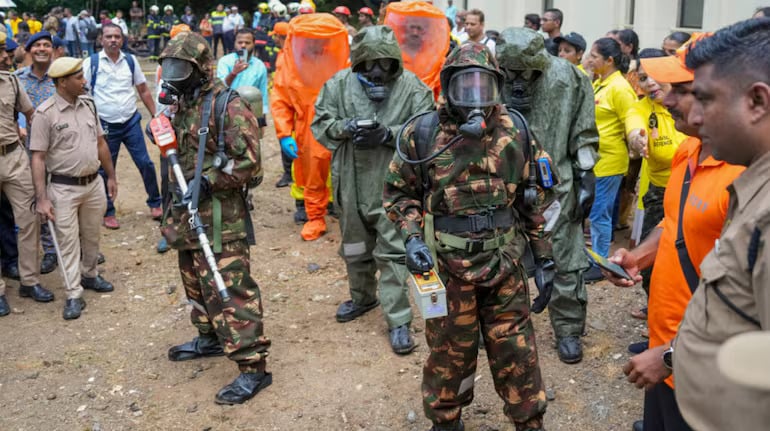The Government of India is drafting new, standardized guidelines for civil defence drills across all states following widespread criticism of poorly executed exercises during the recent India-Pakistan hostilities. An internal circular issued by the Directorate General of Civil Defence, Fire Services and Home Guards (DGFSCDHG) has acknowledged major gaps in preparedness and coordination during the nationwide drills, held for the first time in over two decades.
The drills, dubbed Operation Abhyaas and Operation Shield, were conducted on May 7 and June 30 in anticipation of air raids involving drones, missiles, and aircraft, particularly targeting border cities and civilian areas. The initiative included rare blackouts and the installation of air raid sirens in major urban centres such as Delhi. However, officials observed a “slapdash” approach by several states, with many deviating from the scenario briefings or conducting unrelated drills like fire and hijack simulations.
The DGFSCDHG has now initiated the recruitment of three subject matter experts to draft a comprehensive civil defence manual within six months. This manual will provide state governments with a uniform playbook to respond to air raids, drone attacks, and mass-casualty emergencies. The move comes in response to confusion in protocol, unreliable siren systems, and misaligned drills that failed to reflect modern asymmetric threats such as drone strikes—exemplified during Pakistan’s drone bombardment in response to India’s Operation Sindoor.
Officials pointed to outdated procedures, lack of threat-specific siren systems, and broken or missing communication hotlines as critical failures. Some states, notably those away from border areas, lacked any functioning air raid warning infrastructure, with a few using generic alarms such as those intended for water tankers.
A senior official noted that there must be differentiated siren signals for varying levels of threat and clear citizen instructions for each situation. He stressed the need for consistency and urgency, especially in view of how the nature of modern conflict has evolved to include civilian areas as primary targets.
The May 27 letter from the DGFSCDHG to all state chief secretaries officially confirmed the identification of “critical gaps” during the May 7 drill but did not list the specific shortcomings in the public domain.
India currently has around 500,000 civil defence volunteers trained to assist during emergencies. In light of recent events, the Centre aims to triple this number to 1.5 million. The Ministry of Youth Affairs and Sports, in collaboration with state governments, is conducting camps to recruit more volunteers. A nationwide review of volunteer strength and civil defence infrastructure is expected within the next few months.
The upcoming guidelines are expected to become the foundation for a new, cohesive national civil defence strategy, ensuring better preparedness for future conflict scenarios involving both conventional and unconventional threats.













